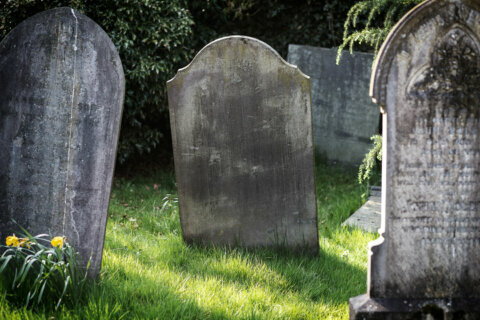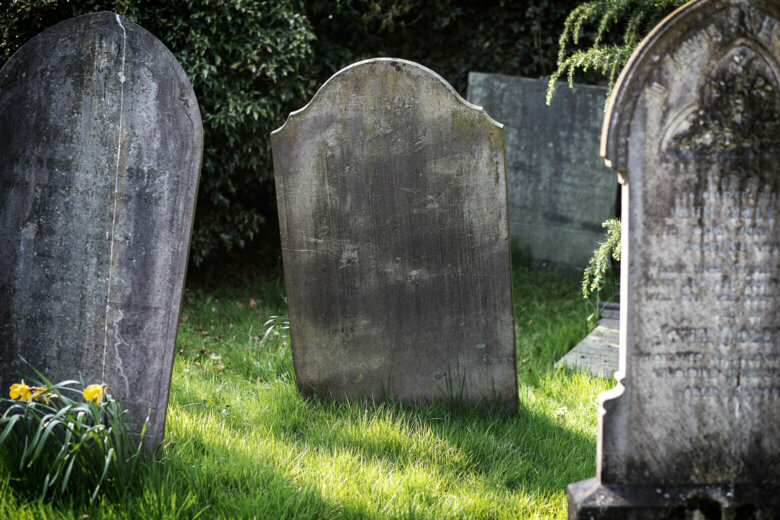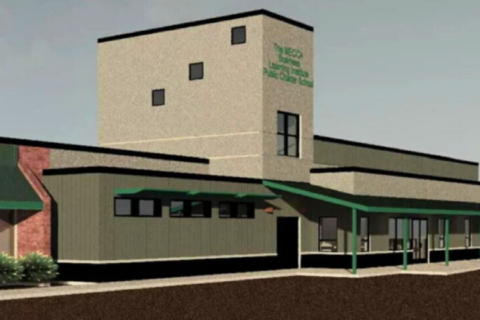
Around the year 1885, a group of black Americans — some of them former slaves — set up their own enclave in the area of Cabin John that they named Gibson Grove.
Morningstar Tabernacle No. 88 Order of Moses Hall and cemetery became a benevolent society, providing care for those who needed it and burial ground for those who passed away in an area where that sort of help wasn’t readily offered to many of them because of their skin color.
Decades later, construction of Interstate 495 sliced right through the cemetery.
Underneath the outer loop along Seven Locks Road, the foundation of the hall and part of the cemetery is all that’s left.
Advocates are worried even more of it could soon be erased by plans to widen the beltway and create toll lanes in and out of Virginia.
The National Trust said that the Maryland Department of Transportation’s plan to widen I-495 “further threatens the cemetery, where known burials span from 1894 to 1977.”
Now, the National Trust for Historic Preservation has named this site one of the 11 most endangered historical sites in the country.
“This is extremely significant. It’s put us out in the public map for individuals to understand what’s going on, what is happening, and what the potential may be,” said Diane Baxter, whose ancestors are buried there. “If this was a white cemetery I don’t think we’d be in the position where we are today and I don’t think the highway would have been constructed over top of the cemetery. They would have found a way to avoid it completely.”
Now the mission is to figure out a way to avoid it from happening again.
The hope is that the awareness raised by its presence on the list will influence the shape and design of a wider beltway before construction crews move in.
“I think this is really big,” said Alexandra Jones, an archaeologist and trustee with Morningstar Tabernacle. “This is giving national attention to an issue which we’ve been essentially fighting now for well over a year.”
“What makes this site significant outside of just the mere fact that it’s a cemetery is that this was a landscape of a benevolent society,” Jones said. “When this society was created, it was during a time period when African-Americans were systematically discriminated against. So you had a group of people who came together and created an organization which would then support themselves and their community that would provide medical assistance, that would provide burial assistance. It was essentially taking the place of insurance companies when insurance companies wouldn’t look after all Americans.”
MDOT is well aware of the cemetery and of concerns that the highway-widening plan being pushed by Maryland Gov. Larry Hogan will harm it, as reported by Maryland Matters.
The top agency official in charge of the project, Jeffrey T. Folden, said in a letter released on Thursday that the state has taken many steps to protect — and avoid encroaching upon — the site.
According to Maryland Matters, MDOT is working toward completion of a federally required environment impact statement on the controversial I-495/I-270 project and has chosen a consortium of international firms to handle design and other “pre-development” work.
Jones said typically burial sites are treated with more respect, and there’s a belief that race is a reason that wasn’t the case with this site.
“In most of America sacred burial grounds are protected. However, what we saw in the 60s was a situation where the state had already encroached upon this cemetery and this area and we see that very evidence today,” she added. “You see where the fence is placed that there are burials on the other side of the fence which is ‘the right of way’ for the highway right now. So that is part of the argument at place. We already know there are burials at the right of way.”
The battle being waged today is only about protecting what’s left of the site and not stopping plans to expand the beltway from going forward.
“We’re not challenging the building of 495/270,” Jones said. “What we are requesting is avoidance, complete avoidance of the cemetery and the right of way where burials are located. That’s all we’re asking for. Avoidance. Reconstruct their engineering plans to avoid this area.”
Montgomery Crawford, who also has ancestors buried there, said that there’s a chance their voices will be heard.
“I do think it’s a battle that’s winnable,” Crawford said. This won’t be the first time that it’s happened, it would be the second. The first time was 1960-61 when the beltway was built.
He said he “can’t see it” happening a second time.
When asked if he meant because people are being made aware of the historic value of the site, or because of the way it happened in the 1960s, Crawford said both.
“It is heartbreaking to imagine that this would happen again,” Crawford said. “Bodies exhumed possibly and relocated within the cemetery, I don’t see that as something that would possibly happen especially with the amount of problems that we have with the black community. Land being taken, persons being injured by police and killed. This is just something that can not happen again.”
Katherine Malone-France, the chief preservation officer with the National Trust for Historic Preservation, agrees.
“Saving the Morningstar Moses Cemetery and Hall site is how we make good on promises to expand our infrastructure in an equitable way without further destruction of communities of color,” she said in a statement. “Past disregard for the heritage of the community of Gibson Grove in transportation projects has already resulted in the loss of an important part of our full American story.”
She added that the hope is the state of Maryland will “do the right thing” with regard to the project, “so there will be no additional wrong to correct in the future.”
Editor’s note: An earlier version of this story featured an image that depicted the Gibson Grove Church, which is not part of Cabin John’s Moses Hall and Cemetery. The photo has been removed.









